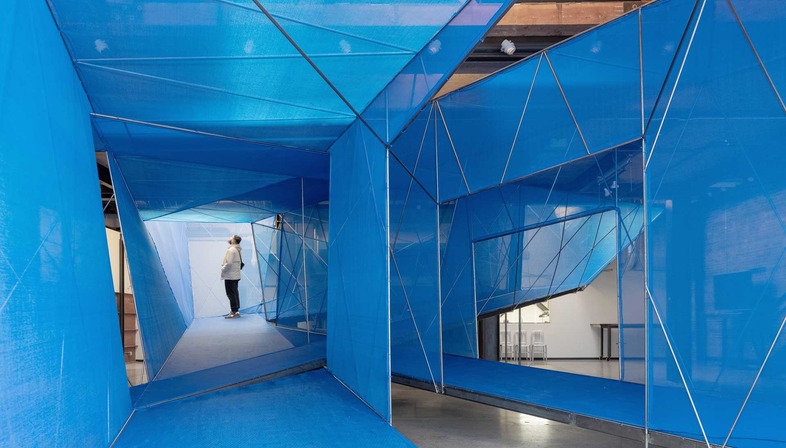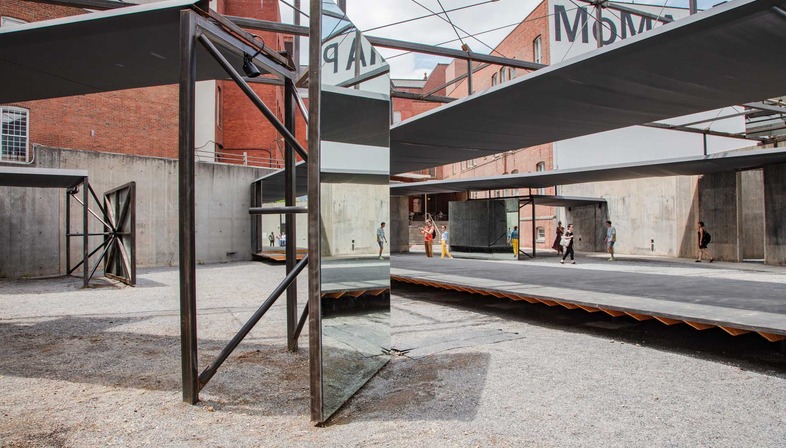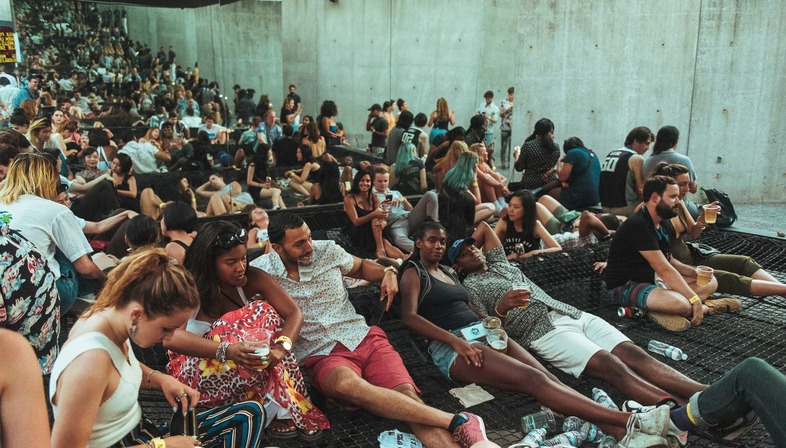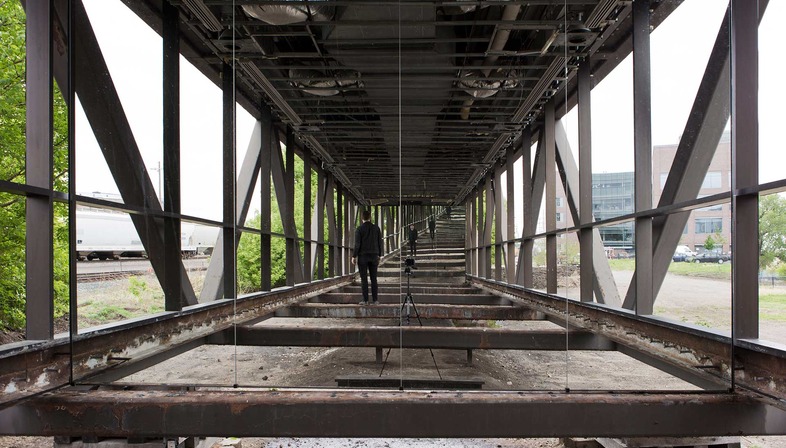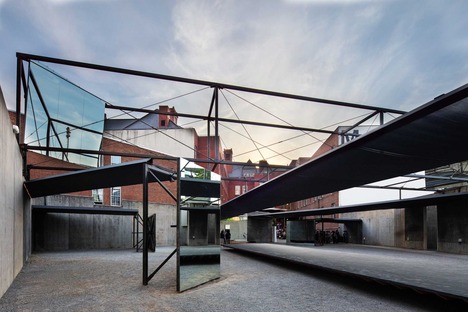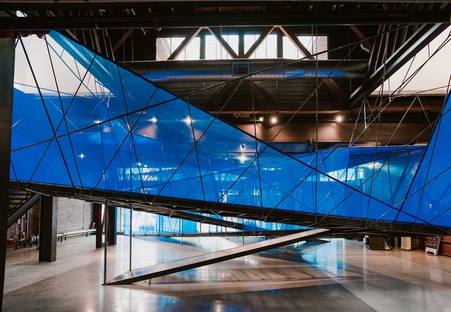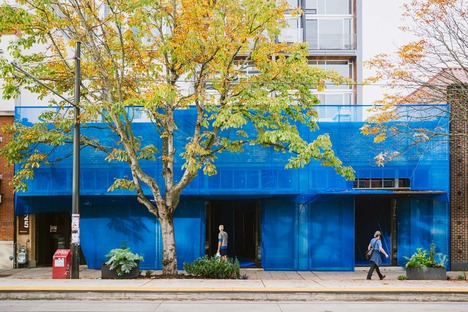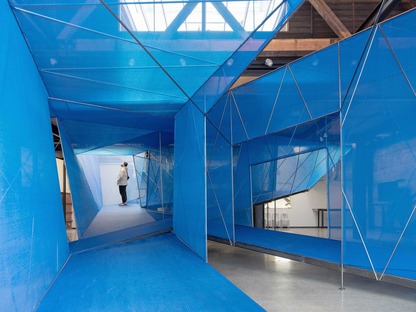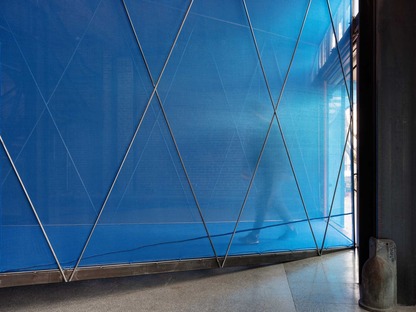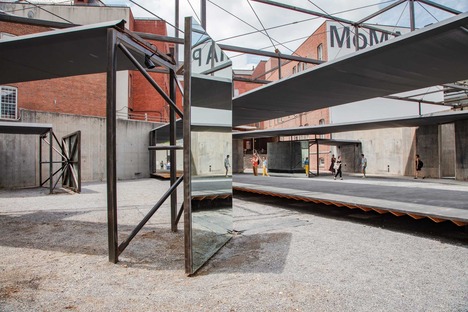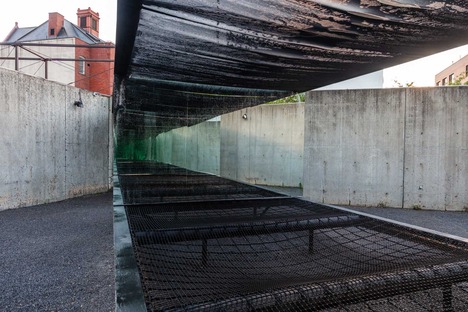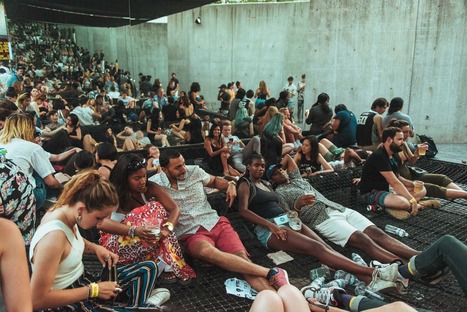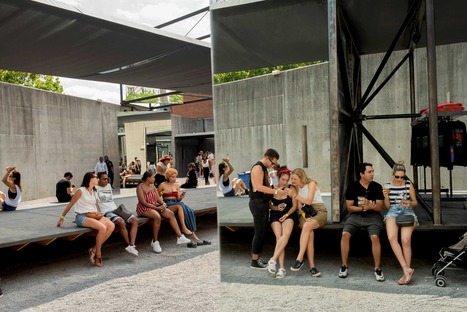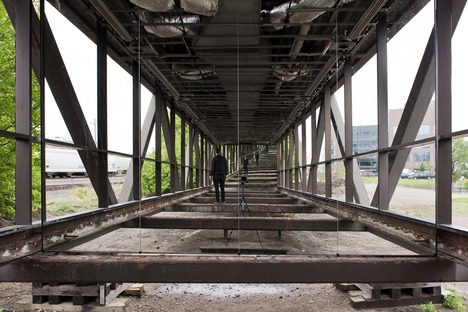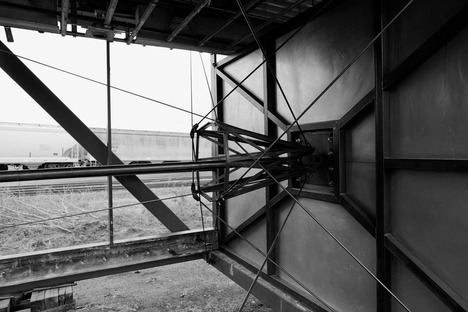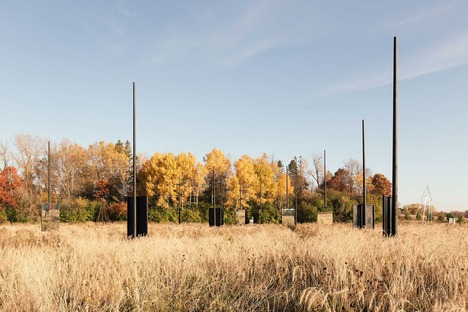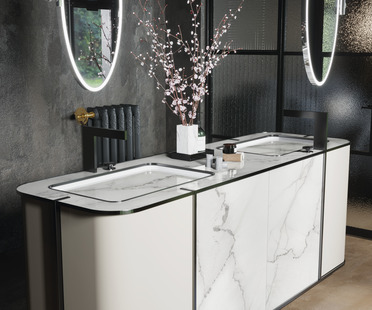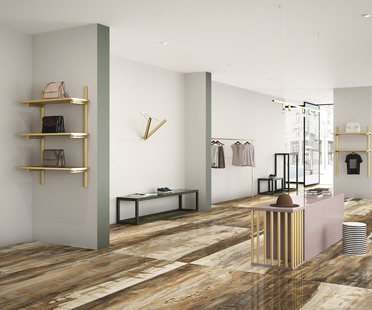25-05-2021
LET’S PLAY WITH MIRRORS
James Harnois, Ryan Muir, Andrew Latrielle, Clayton Hackwith,
Installations, Mirrors,
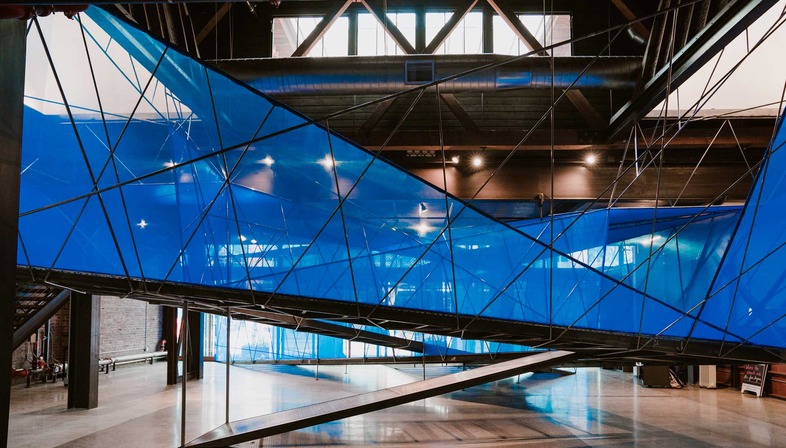
We have been hearing about cultural conditioning for a long time, but unfortunately it seems that we are still slaves to them: it has been since mid fifth century BC that Herodotus already wrote about this issue. The 'father of history', as he has been defined, a man, in my opinion, of extraordinary relevance still today, has given us a lesson that could have avoided many behaviors that still undermine a presumed inclusive openness. Supporting the value of 'relativism', he refused to recognize the Greek tradition as the only one worthy of consideration. By affirming that each people has its own tradition and culture, he demonstrated many centuries ago that we cannot speak about the best customs because those assimilated and adopted in the environment in which we grow up will always appear better. And in his 'Histories' he reported an anecdote that exemplary demonstrates this concept: "During his reign, Darius summoned the Greeks present at his court and asked them in exchange for what wealth they would have agreed to eat the dead fathers: the Greeks replied that they would not do it at any price. Darius then, summoned the Indians called Callati - those who eat their parents - in the presence of the Greeks who understood what was being said through an interpreter, asked in exchange for what riches they would have accepted to burn the dead fathers with fire. The Callati, shouting loudly, exhorted Darius not to utter impious words”, Historiae, III, 38, 3.
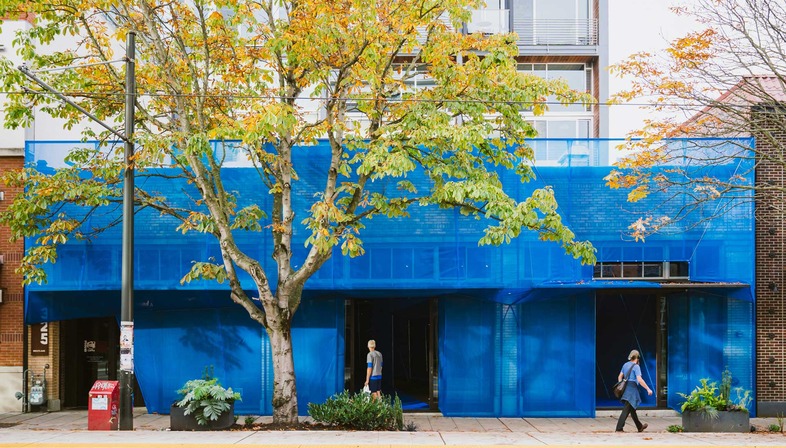
'Lure'. MadArt Studio, South Lake Union, Seattle. Dream The Combine. Photo of James Harnois/Courtesy of Dream The Combine.
We should perhaps more often, with greater attention or at least with less blind obedience to paradigmatic models, objectively observe the different perspectives that a reflected, deconstructed reality offers us, reading errors, exaggerations and exclusions, in order to reconstruct it, modifying what stridently emerges and our conscience does not share. This is what a couple of young architects are doing, fighting against fixed formulas that devalue a profession that should be at the service of all, seeking authentic relational exchanges, avoiding hierarchies and exclusions. Authors of various installations, they have often resorted to the mirror, playing on the visual uncertainties that this effective means of communication provokes, to question a vision of the world and society influenced by preconceptions. Utilizing dispositions and inclinations of the specular surfaces, they activate dialectical situations which, by conveying a multiplicity of viewpoints of the same context, allow to glimpse changes and new possibilities. The projects outline and implement journeys that, deviating from attitudinal or mental standards, unconsciously assimilated or accepted due to an undeniable passivity, lead to a progressive self-awareness.'Lure'. MadArt Studio, South Lake Union, Seattle. Dream The Combine. Photo of Claylon Hackwith/Courtesy of Dream The Combine.
The two, even when they do not rely on the complicity of the mirror, find other strategies capable of arousing curiosity and pushing to exploration those who, experiencing their works, become active participants. The intent remains unchanged and it is with resoluteness that they do their utmost to help achieve a real consciousness, by eradicating the rigidity of certain positions, cracking and breaking false certainties. The dialogue is established by tempting the public through an irresistible invitation, a kind of 'siren song'. They use, as they declare, “languages of film and theatrical scenography to engage with complexities of narrative, image, space, and direct experience”, and it is just with an expedient, as choreographic as catalytic, that they gave life to ‘Lure'.The title of the installation flaunts and emphasizes the fundamental ingredient that induces the contact, subsequently driving to live the experience, on purpose specifically conceived to break down the boundaries between public and private. A construction net for the collection of debris, normally used in restoration works, loudly catches with its powerful, vibrant bright blue and the full-screen color, enveloping the facade of an art gallery overlooking the main street, in South Lake Union, Seattle. The net, according to a technique of post-production, the ‘chroma keying’, highlights the foreground, grabbing the passers-by, usually indifferent to the exhibitions that are taking place, and signaling that something is happening in MadArt Studio, where works are in progress. It encourages to enter, following a pre-arranged route that, marked by the same intense electric hue, stretches into the building. A series of walkways, wrapped by an identical lattice mesh, zigzagging hallways, fragmented and overlapping meandering passages, constitute the labyrinthine track of a gigantic steel complex which, supported by tie rods, appears suspended in the void. The structure-sculpture, a sort of 'geometric blue tunnel' with acute angles, defined as a "looping circulatory system", disorients, forcing to proceed paying close attention to the steps. And paradoxically, the trap, which makes visitors feel destabilized, offers them an opportunity to focus on themselves and make independent decisions. The circuit embodies a strong metaphorical value, representing, as the authors reveal, “a challenge to our automatic ways of moving around the world”.
Jennifer Newsom and Tom Carruthers, creators of 'Lure', partners in work and in life, present themselves in an extremely original way. It is with a declaration of openness without preclusions to any possible form of contamination and collaboration that they decided to call their studio, 'Dream the Combine'. The expression speaks of unconventionality, and sounds as a manifesto of their aspirations. It was at a fairly crucial moment of their new life together, when, leaving New York, they set up their own practice, finding themselves in front of important choices. Launching this message, they intended to allude to their ideal of combining both their potentialities and above all to their dreams, which would have nurtured their practice. A note that should characterize every architect and artist’s life.
‘Hide & Seek’. YAP MoMA PS1, 2018, Long Island City, New York. Dream The Combine. Photo by Pablo Enriquez/Courtesy of Dream The Combine.
Their creative talent was recognized by a victory particularly significant for young architects. About to embark on their own career, they won the 2018 edition of the Young Architects Program MoMA PS1 with one of their experimental, large-scale site-specific installations, conceived as usual like a synthesis of art, architecture and cultural issues. ‘Hide & Seek', the winning structure, stands unfolding and winding with the fresh effervescence of the carefree tones of a child's game in the courtyard of the Museum of Modern Art. An interactive presence that with its playful setting has spiced up the summer evenings with concerts and events of the annual Warm Up Summer Music Series. Nine elements, steel framed, flow configuring paths in a seamless continuity, suggesting entertainment or pauses, opportunities to walk, sit, together in a group or alone. Platforms and walkways run on different levels, following one another, joining moments of encounter and alternating with a large metal net that acts as a hammock, on which to jump or lie down to watch the stars. The static rigidity of the elegant, linear structure is contradicted by the dynamic fluidity, continuously energized and renewed by unexpected stimuli and spontaneous situations.The idea of living an unplanned condition of mutability is stressed by enormous oversized inward-facing, hanging mirrors, which, left free to respond, swinging, to the wind or the touch of visitors, continuously renovate the reflected scenes. Their location has been strategically studied in order to expand the illusion of the space beyond the limitations of the museum’s walls, reaching the surrounding streets and allowing unexpected connections, which will see the adjacent neighborhood animated by the most diversified community, mirrored without discrimination or exclusions of any kind. This manipulation, capable of annihilating the physical barriers, responds to the aim to activate an urban context, including a more extensive and varied area, an equally heterogeneous public with the generosity that should be the peculiarity of an architectural gesture.
The intervention appears a provocative proposal addressed not only, in the specific case, to Long Island City but more generally to the entire American and world cities. The MoMA with its wall-protected courtyard sparks the opportunity to affirm the urgency for a change, foreseeing art without limitations. The writing "You are here", placed in the highest and most visible position, and reserved to those outside who will not enter, concisely proclaims this need to transgress and dissolve rules that cause exclusion. The message evokes "Art Is ...”, a performance that Lorraine O'Grady, an artist that everyone should know, organized to contradict the statement of a friend convinced that avant-garde art had nothing to do with people of color. A parade float, with 15 African-American and Latino performers, all dressed in white, was set up in 1983 for the annual African American Day Parade in Harlem. Joining the extremely playful general atmosphere, they walked and danced in the middle of the crowd with empty golden picture frames, among the screams "frame me, make me art ", encouraging viewers, mostly African-Americans, to be photographed within the frame, as subjects worthy of an artistic documentation. The shots were collected, giving life later to the eponymous exhibition ‘Art Is ...
O'Grady’, successfully introducing avant-garde art in the largest and most crowded black manifestation, had proven not only that her friend was wrong, but was also able to turn the spotlight on a serious omission, crucial issues of exclusion and racial under-representation.
The attention from the parade was centered on the spectators who became the real protagonists: “Framing, in the piece, thus becomes method, content, and metaphor”. 'Being framed' idiomatically means to be perceived, even unwittingly, as an artistic subject, just as a reflective surface can become a metaphor of opening, a threshold, a ‘passage’ giving access to a world that is not always for everyone.
‘Hide & Seek’. YAP MoMA PS1, 2018, Long Island City, New York. Dream The Combine. Photo by Brandon Polanco/Cortesia di Dream The Combine.
In 'Hide & Seek' the mirror draws to another experiential circumstance, as an incentive that invites people to express themselves through body language. The reflective surfaces are integrated as elements of scenic completion, aid to improvisation and unpredictable, unexpected shows. The movements, the postures arise from a sort of responsive contact with the context of the moment, just as those manifestations that the golden frame of O’Grady had been able to establish with the street. The crowd becomes the protagonist and to the people’s artistic creativity is entrusted the direction of the performance. Mirrors are often contemplated also in abandoned areas generating installations that intrigue with the magnetic force of the spatial enigmas they suggest, inspiring scenes that combine an inseparable and rationally inexplicable dualism. Parallel worlds between which a very thin practically ineffable line runs, as between the one that separates the visible and intelligible world, which Plato tries to explain through a well-known allegory. In the myth of the cave, men see shadows and believe that they are real presences. A group of prisoners chained, from the earliest childhood for their entire life, with their gaze turned to the white wall of a cave, watch projected on the wall shadows of forms of various objects, animals, plants and men transported beyond a low wall along the walkway, in front of the cave’s opening, and think to see real beings. Plato supposes that if one of them was freed and forced to look in the opposite direction, towards the cave’s opening, he would first be dazzled and hurt from sunlight and then, even if he was shown those lifeless objects, he would still remain dubious, preferring to continue to believe in his previous perceptions. He would need time and, once he understood the situation, he would certainly want to free and involve his companions, but it would be very problematic because it is not easy to accept a new condition that makes you feel uncomfortable and that subverts beliefs, which were considered incontrovertible truths. Even if Plato’s era is very distant, the theme of cultural relativism emerges again with the strength of the current problem, with denigrating tones for those who use shadows to mask reality and those who often do not want to see beyond these shadows that reassure them. In our century, the myth of the cave could be interpreted as a metaphor of the interference and control of the mass media and those who hold economic and political power over public opinion, accustoming the news to specific interests. Artists belonging to the most disparate sectors, from cinema to literature and the visual and performing arts, have on many occasions offered a contribution to help raise awareness towards a decision-making autonomy.Jennifer and Tom commit themselves with passionate involvement in this effort to free from forms of passivity that overshadow that sense of responsibility that each of us should demonstrate, by finding possible forms of re-education, which make use of experimentation and dilemma as the most effective devices. It is precisely from moments of crisis, of strong perplexity that often border on confusion, that mostly derive answers not dictated by common beliefs and practices, but by ethical and moral needs sincerely and objectively pondered.
'Longing’. Twin Cities, Minnieapolis. Dream The Combine. Photo of Clayton Hackwith/Courtesy of Dream The Combine.
There is another installation that, above contributing to the same cause, makes us think about a topic of vital importance and interest. 'Longing', "an emotional expression and a verbal game on lengthening", in the words of its two creators, is linked to a curious and important story from the point view of architectural recycling. A Twin Cities design company a few years ago promised a sum of money for transportation, and subsequent reuse of an 84 foot long section, part of the pedestrian infrastructure system connecting two buildings in downtown Minneapolis. Jennifer and Tom decided to breathe new life into the segment. Two mobile gimbal-suspended mirrors of the same size were placed internally, facing each other, at the two extremities of the skyway. By putting pressure on a counterweight at the back of the panels, anyone was able to make changes to the internal structure, causing bizarre distortions, deformations and unpredictable impacts, injecting apparent kinetic properties into a partition of condemned steel, which had represented a moment of connection of intense transition and movement.The juxtaposition of the two mirror surfaces produced an effect of extraordinary depth in different directions, literally engulfing in this magic optical arrangement. It appeared as an invitation, a surreal disclosure towards infinity. And the story of rebirth does not end with this tantalizing intervention: an unexpected request arrived from a photographer who, at the end of the exhibition, fallen in love with the 140 tons of steel, asked the permission to arrange the long parallelepiped on the shores of Lake Superior, a three hour drive from the city, to be utilized as a minimal, special home for her young family. CityDeskStudio, which originally bought the piece and launched the proposal to save it, not accepting the unfair end of the demolition, shares with Jennifer and Tom the merit of the intelligent management of these reiterated rebirths. This example should trigger changes in the way of considering certain architectural residues, avoiding relegating them as fixed monoliths in the immutable permanence of a unique functionality.And I also hope that Jennifer and Tom, with the passionate fervour they demonstrate by practicing architecture like militancy and with their as audacious as unconventional installations, will be able to convince that ethical and moral codes would be the guidelines of the profession, shaking the tendency, quite widespread, that contaminates and flattens that originality that paradoxically everyone would like to have, in this era where unfortunately the mainstream is the dominant current.
Virginia Cucchi
Credits:
Dream the Combine : http://www.dreamthecombine.com/
Cover: ‘Hide & Seek’. YAP MoMA PS1, 2018, Long Island City, New York. Dream The Combine. Photo by Pablo Enriquez/Courtesy of Dream The Combine.
01-02: 'Lure'. MadArt Studio, South Lake Union, Seattle. Dream The Combine. Photo by James Harnois/Courtesy of Dream The Combine.
03-04: 'Lure'. MadArt Studio, South Lake Union, Seattle. Dream The Combine. Photo by Claylon Hackwith/Courtesy of Dream The Combine.
05-06:‘Hide & Seek’. YAP MoMA PS1, 2018, Long Island City, New York. Dream The Combine. Photo by Pablo Enriquez /Courtesy of Dream The Combine.
07:‘Hide & Seek’. YAP MoMA PS1, 2018, Long Island City, New York. Dream The Combine. Photo by Brandon Polance/Courtesy of Dream The Combine.
08: ‘Hide & Seek’. YAP MoMA PS1, 2018, Long Island City, New York. Dream The Combine. Photo by Ryan Muir/Courtesy of Dream The Combine.
09: 'Longing’. Twin Cities, Minnieapolis. Dream The Combine. Photo by Clayton Hackwith/Courtesy of Dream The Combine.
10: 'Longing’. Twin Cities, Minnieapolis. Dream The Combine. Photo by Andrew Latrielle/Courtesy of Dream The Combine.
11: 'Clearing'. Dream The Combine. Photo by Claylon Hackwith/Courtesy of Dream The Combine.










